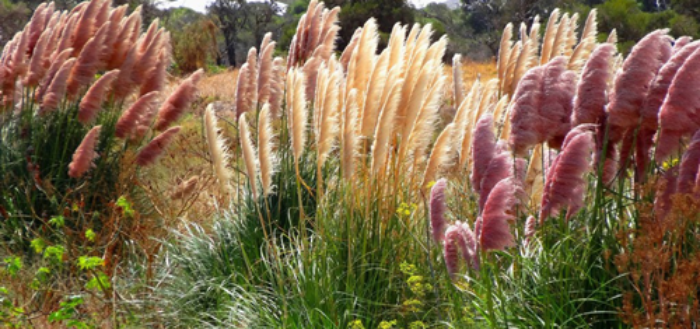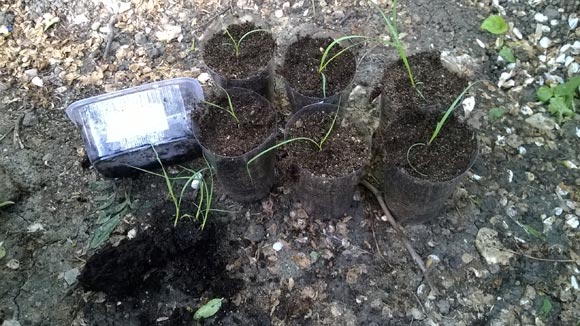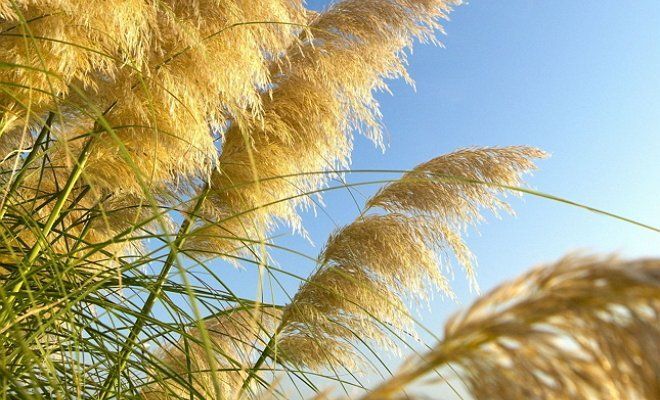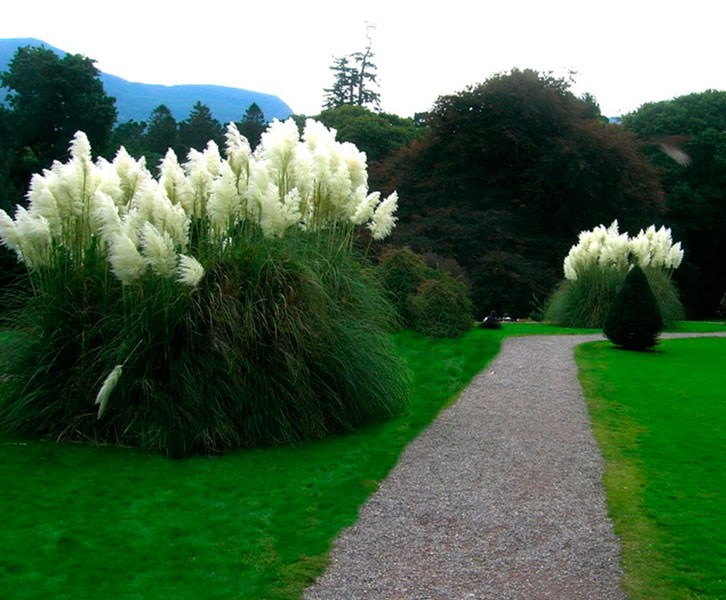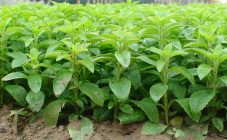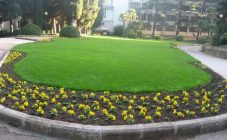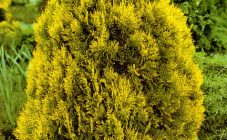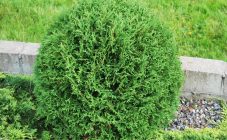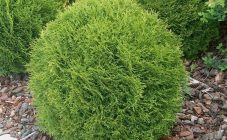Content:
Plants often "move" from one country to another. So it happened with the inhabitant of the Pampas - the cortaderia. This representative of wildlife moved to the dacha plots of the Russians and took root here, despite the fact that the Russian and American climatic conditions differ from each other.
Briefly about culture
Cortaderia got its scientific name from the Spanish verb meaning "to cut." This happened because the edges of the leaves of the plant are very sharp. If you touch them carelessly, you can get hurt. Cortaderia is one common name for 23 species of perennials related to cereals or, as they are also called, bluegrass. Some members of this family are called "pampas grass".
Their characteristic features are:
- the ability to form sod on the soil surface;
- panicle-like inflorescences that appear at the end of the summer period and delight the eye all winter;
- powerful root system that goes deep into the ground;
- high seed productivity, which makes the fight against a representative of cereals difficult.
Description of the variety
It is unknown when a representative of the coraderia family appeared in the American steppes. This herbaceous crop has been growing there for centuries and is considered a weed. And the Russified plants have become decorative and delight the eyes of dacha owners with their beautiful appearance.
In Russia, an ornamental cereal plant with fluffy inflorescences appeared at the end of the 20th century. Seeds of pampas grass were brought from the United States by Russian businessmen who wanted to impress those around them with imported plants on their backyards in the Moscow region. Then the ornamental grass, similar to the green streams of a fountain, began to spread across the Russian expanses.
During its spread, the grass has changed its appearance. Plants with the following characteristics are now most common:
- height of straight stems from 2 to 4 meters;
- a large number of long (up to 2 meters) and thin, hard and rough leaves at the very base of the stems, gives the decorative grass a voluminous look;
- depending on the variety, the color of the leaf blades can be green, bluish, silver or whitish with a matte shade, there are specimens with a white or cream stripe along the entire leaf;
- on tall stems silvery, pink or yellow spike-shaped inflorescences appear.
Female flowers remain beautiful even during lingering rains. Male inflorescences fade in the autumn.
Landing
A perennial steppe plant easily adapts to new habitats. It takes root in many natural and climatic zones, even in Siberia with its harsh winters.
A member of the family of cereals reproduces by seeds, which can be purchased in stores. In this case, the gardener cannot predict what the floor and height of the ornamental grass will be.The time when the plant will bloom is also unknown. This can only be understood in a year.
In warm regions, seeds are planted in the open ground in autumn. But it is not known how many seedlings will appear in the spring. Better not to risk it and start growing the plant at home. The process of harvesting seedlings consists of the following stages:
- in February - March, the seeds are stratified, that is, they are kept in the refrigerator for 2-4 weeks. At low temperatures, the protective shell of the seeds is destroyed. Once in warm ground, they germinate better. Without stratification, seeds can rot in the soil;
- prepare flat containers filled with a moistened sand-peat mixture;
- the seeds are small, so it is better to plant them at a distance of 0.4 millimeters from each other;
- germination takes place at room temperature in a well-ventilated area. After about 10 days, sprouts will appear;
- irrigation should be started 2 days after the top layer of the earth has dried. Seedlings are watered at intervals of 2-3 days;
- grown plants are carefully planted in separate pots. Then they are placed in a room with diffused lighting;
- 2-3 weeks before planting in open soil, the seedlings begin to harden. In the afternoon, the pots are taken outside for 1-2 hours. The hardening time is gradually increased, bringing up to 20 hours;
- after the onset of stable heat, the plant is planted (slightly deepening the root collar) in a place selected in advance.
In order for a representative of cereals to grow quickly, you need to choose the right planting site. Required availability:
- good lighting;
- fertile and loosened soil that is regularly moistened.
Any irregularities in the area negatively affect the growth of grassy crops. If you plant it on a hill or in a place with a lowering of the ground, then the Pampas grass will most likely die or grow stunted.
It is advisable to choose the habitat of ornamental cereals so that there is no need to transplant them. After all, their roots develop quickly. In the future, it will be problematic to dig up the entire powerful root system. Part of the rhizome will definitely remain in the soil, the plant will begin to grow again.
Pampas grass planting and care
In the middle zone of the Russian Federation, where in winter there are frosts down to minus 25 degrees, a representative of the cortaderia family will grow in a couple of years and turn into a beautiful bush. It does not require much effort from the gardener to breed and grow herbaceous crops. Pampas grass is looked after in much the same way as other garden dwellers.
- watering should be done systematically, every 2-3 days. Adults are watered more often, especially in hot weather. The higher the plant, the more moisture it requires. An overgrown bush needs about two buckets of water;
- feed the herbaceous culture only in the spring. It is better to use a mineral fertilizer containing sodium, calcium and chlorine;
- places where tall grains grow are sprinkled with pieces of tree bark or wood chips. Woody materials decompose slowly and do not often need to be added under the plants. At the stage of decay of these additives, it is necessary to clear the area, and only then open a new pack with tree bark or chips;
- for adult pampas grass to endure wintering better, the bushes should be pruned at a level of 30-40 cm. This is best done in mid or late October. The leaves are tied with twine so that all the moisture is glass from them. Mulch near plants is not removed. If frosts are expected, then it is recommended to cover the soil near the stems with dry foliage, straw or grass. In the northern regions, the herbaceous culture is additionally covered with a warm cloth;
- when warmth comes in April, dried foliage is cut off, last year's panicles are removed.
Diseases and pests
Ornamental grass has strong immunity and endurance. The ornamental plant does not have problems with garden pests due to its hard leaves, therefore, preventive treatments are not required.
In rare cases, anthracnose or powdery mildew can attack the plant. Then the affected parts are removed and sprayed with a fungicide. In dry and hot summers, aphids or spider mites can attack the Pampas grass. Sick individuals are treated with insecticides.
Landscape: use in garden decoration, flower beds, lawns
Cortaderia or pampas grass is used for a summer cottage with a pond. The plant will spread along the coast without going down to the bottom with water. However, if you are close to playgrounds or roads, the weed will get in the way, as it will fill all the space around. If you plant a steppe inhabitant among the flowers, then it will become a good background for bright buds. Also, the muuli grass is planted next to bush and tall crops. Planting pampas grass with drought-resistant crops is common, since they also do not require special care.
The grass that has left the pampas does not require special attention from the gardener. The plant takes root on the territory, regardless of weather conditions and climatic features. Its appearance will delight the eye for a long time. Thanks to all this, the popularity of the cortaderia in Russia is growing every year.

